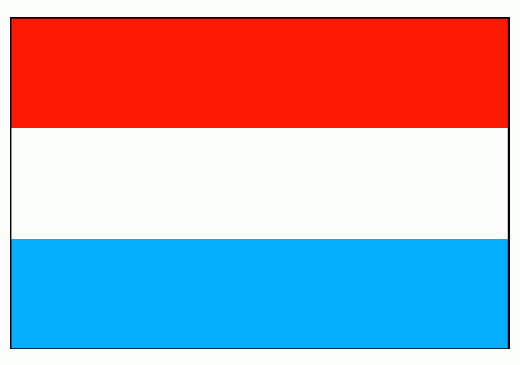The Luxembourg flag consists of three equal horizontal stripes, colored red, white, and light blue. The design is based on the coat of arms of the House of Luxembourg, which features a red lion on a white and light blue striped background. The flag was first adopted on June 23, 1972, but the colors have been used in various forms since the 13th century.
The red and white stripes represent the arms of the Duchy of Limburg, while the blue stripe represents the loyalty of the Luxembourg people to the House of Nassau-Weilburg. The flag is commonly flown at official buildings, national holidays, and sporting events.
Luxembourg, officially known as the Grand Duchy of Luxembourg, is a small landlocked country located in Western Europe. Despite its small size, Luxembourg is known for its rich history, stunning landscapes, and vibrant culture.
History
The history of Luxembourg dates back to the Roman era when it was first inhabited by the Treveri, a Celtic tribe. The Romans conquered the region in 53 BC and established a garrison in the present-day city of Luxembourg. The region remained under Roman rule until the 5th century AD, when it was invaded by the Franks.
In the following centuries, the region was ruled by various feudal lords and dukes, including the House of Luxembourg, which gave its name to the country. In 1354, the Duchy of Luxembourg was formed as a result of a treaty between the Holy Roman Emperor and the Duke of Burgundy.
During the 16th and 17th centuries, Luxembourg was invaded several times by neighboring countries, including France and Spain. In 1815, Luxembourg was incorporated into the Kingdom of the Netherlands as a result of the Congress of Vienna. However, in 1830, Belgium declared independence from the Netherlands, and Luxembourg became a separate entity within the Netherlands.
In 1867, Luxembourg gained independence from the Netherlands under the Treaty of London. It became a constitutional monarchy with a parliament and a prime minister. During World War I, Luxembourg was occupied by Germany, and during World War II, it was occupied by Germany again.
After World War II, Luxembourg became one of the founding members of the European Union and NATO. Today, it is a prosperous and modern country with a high standard of living.
Travel Information
Luxembourg may be small, but it is packed with history, culture, and stunning natural beauty. Here are some things to see and do in Luxembourg:
Luxembourg City: The capital city of Luxembourg is a UNESCO World Heritage Site and is known for its medieval fortifications, stunning architecture, and vibrant culture.
The Ardennes: The Ardennes region of Luxembourg is a beautiful forested area with plenty of opportunities for hiking, cycling, and other outdoor activities.
The Mullerthal Region: This area, also known as “Little Switzerland,” is known for its stunning rock formations, deep valleys, and picturesque villages.
Vianden Castle: This impressive castle is located in the town of Vianden and dates back to the 10th century.
The Luxembourg American Cemetery and Memorial: This cemetery is a tribute to the American soldiers who fought and died during World War II.
The Moselle Valley: The Moselle Valley is a picturesque wine region located in the east of Luxembourg. It is known for its vineyards, historic towns, and stunning scenery.
The Bock Casemates: These ancient underground tunnels and chambers are a fascinating glimpse into Luxembourg’s history as a fortress city.
Luxembourg is also known for its cuisine, which is a mix of French, German, and Belgian influences. Some must-try dishes include judd mat gaardebounen (smoked pork collar with broad beans), bouneschlupp (a traditional green bean soup), and kachkéis (a cheese spread made with melted cheese, butter, and cream).
In terms of transportation, Luxembourg has an extensive public transportation system that includes buses and trains. It is also a popular destination for cycling, with plenty of bike trails and rental shops available.
Conclusion
Luxembourg may be small, but it is a country with a rich history, stunning landscapes, and vibrant culture. From the medieval fortifications of Luxembourg City to the natural beauty of the Ardennes.




